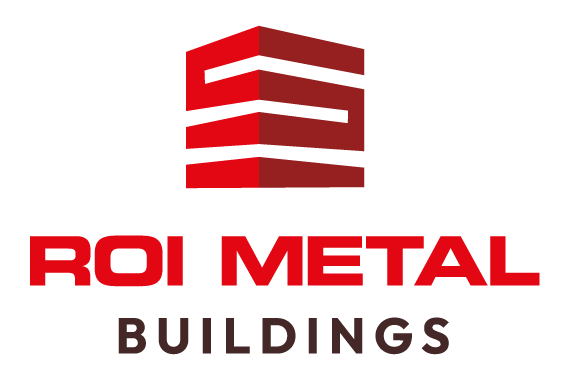Safety is not just an afterthought in aviation—it’s the foundation on which all operations are built. Have you ever wondered how an airport becomes a safe haven for millions of travelers annually? From the design of bustling terminals to the illumination of runways, specific building codes and regulations shape every corner of these complex facilities. These guidelines, mainly established by the Federal Aviation Administration (FAA), serve as crucial roadmaps that help prevent accidents and ensure a smooth flow in airport operations. So buckle up as we explore the essential safety standards that keep our skies friendly and airports functioning, whether you’re a traveler curious about what goes into airport construction or a professional navigating the aviation industry’s intricate regulations.
Key aviation building codes and regulations, as established by the Federal Aviation Administration (FAA), include guidelines for airport design, runway lighting standards, and compliance with environmental assessments. These regulations ensure safety in the planning and constructing of airport facilities, necessitating adherence to specific advisory circulars such as AC 150/5300-13 for overall airport design and AC 150/5340-30 for runway lighting.
Key Aircraft Hangar Building Codes
The significance of codes like AC 150/5300-13 can’t be overstated. This guideline isn’t just a suggestion; it’s the bedrock upon which safe airport design is built. Covering crucial elements such as airport layout, runway design, taxiway configurations, and airfield geometry, AC 150/5300-13 ensures that all parts of an airport work harmoniously together and meet all applicable standards.
Think of it like the blueprint of a well-orchestrated concert—every instrument (or component) has its place to prevent chaos and deliver an exquisite performance. The careful organization this code prescribes guarantees that both aircraft and ground vehicles can navigate efficiently, fostering a robust system where safety is paramount.
By adopting these guidelines, airports can minimize potential hazards associated with ground collisions or improper takeoff and landing procedures. Furthermore, compliance with AC 150/5300-13 helps avoid costly redesigns and adjustments further down the line, ensuring every dollar spent contributes positively to operational efficacy.
It’s in your best interest—whether you’re an architect, engineer, or contractor involved in aviation projects—to embrace these mandates right from the inception of your project.

Moving on to another critical code, AC 150/5340-30 lays out specific expectations for runway lighting systems. Imagine coming in for landing at night or during heavy fog—without reliable lighting, this situation could quickly lead to disaster.
This circular tackles everything from light intensity and placement to maintenance requirements, thus aiming to guarantee that pilots have the visual aids necessary for safe landings and takeoffs under less-than-ideal conditions.
What’s fascinating about this code is how it combines technology with operational needs. Today’s lighting systems can adapt to varying visibility conditions, ensuring that pilots receive consistent signals about runway status and safe landing paths, whether it’s a clear summer evening or a stormy winter night.
This proactive approach significantly reduces accidents caused by miscommunication or lack of visibility.
Given these codes’ critical roles, staying informed and compliant isn’t merely a recommendation—it’s an absolute necessity for anyone involved in aviation construction projects. Understanding how these guidelines interconnect allows professionals to create designs that uphold safety while meeting contemporary standards across jurisdictions.
As we progress, exploring the landscape of compliance requirements will provide insights into navigating both federal regulations and locally established mandates that ensure adherence to these essential standards.
Introduction to Aircraft Hangars
Aviation buildings, including residential aircraft hangars and commercial aircraft hangars, play a crucial role in the aviation industry. These structures are not just mere shelters; they are the backbone of aircraft maintenance, storage, and repair operations. Ensuring that these buildings are designed and constructed to meet stringent regulations is paramount for safety and efficiency.
The International Building Code (IBC) provides comprehensive guidelines for the construction of aviation buildings, ensuring they comply with local building codes and aviation requirements. These regulations cover various aspects, from structural integrity to fire protection, ensuring that the buildings can withstand different loads and stresses, including wind and seismic forces.
Moreover, the Federal Aviation Administration (FAA) has specific requirements that aviation buildings must meet. These include standards for fire protection, structural design, and maintenance protocols. By adhering to these codes, aviation buildings can provide a safe and secure environment for both aircraft and personnel, minimizing risks and enhancing operational efficiency.
In essence, the design and construction of aviation buildings must prioritize compliance with the IBC and FAA requirements. This ensures that the structures are not only robust and durable but also equipped to handle the aviation industry’s unique demands.
Federal and Local Compliance
Federal codes issued by the Federal Aviation Administration (FAA) provide a vital framework for aviation safety; however, they are only part of the equation when it comes to building compliance. Local and state governments can impose additional regulations that must also be adhered to. This dual-layer of compliance ensures not only safety but also alignment with community values and standards.
To ensure that both federal and local guidelines are met, it is essential to take a systematic approach. First, engage with local planning authorities to understand regional requirements that could affect your project. Often, these local regulations might introduce specific criteria related to zoning, land use, and environmental impact that go beyond federal mandates.
In many cases, local conditions can vary widely. For instance, an airport in a densely populated area may face stricter noise restrictions than one located in a rural setting.
Once you have a grasp on these local nuances, the next step is to align them with existing federal guidelines. Keep in mind that sometimes, regulations might overlap while at other times they could conflict. It’s crucial to document each regulation as you go along; this will help create an effective plan that satisfies all parties involved. For example, suppose a local authority requires a higher safety standard for fire protection than what the FAA stipulates. In that case, you’ll need to adhere to the more stringent rule to avoid potential penalties.
Moreover, staying informed about changes in both federal and local building codes is essential for maintaining compliance over time. Regular reviews of the regulations can not only save you from unexpected fines but can also enhance the safety and operational efficiency of your aviation facility. It’s advisable to set up a quarterly calendar reminder to review any updates or amendments from reliable sources such as the FAA’s official announcements or your local government’s planning department.
By taking this layered approach towards compliance, you create a robust structure capable of meeting both mandatory federal codes and additional local standards. Continuous improvement and adaptation are key in developing an efficient aviation facility.
While navigating these regulations may feel daunting, understanding their significance unlocks not just compliance but improved operational performance as well—a crucial factor for sustainable growth in the sector that supports air travel infrastructure.
Airport Structure Standards
Airport structures serve a multitude of functions, from bustling passenger terminals filled with travelers to expansive maintenance hangars that house large aircraft. The choice of construction materials, such as concrete, plays a crucial role in ensuring the structural integrity and safety of these buildings. Each area is designed with its own specific set of standards to ensure smooth and safe operations. Not only do these regulations help maintain the integrity of the structures, but they also greatly contribute to the safety of all who utilize them.
Passenger Terminals
For instance, passenger terminals are subject to rigorous standards pertaining to fire safety protocols, emergency exits, and Americans with Disabilities Act (ADA) compliance. These measures aren’t just red tape; they are essential components designed to protect lives and ensure that individuals can safely enter and exit the terminals. The FAA mandates these standards through various codes because they know the chaos that can ensue in an emergency situation if proper protocols aren’t followed. According to FAA guidelines, the structural integrity of terminals must also withstand considerable loads from both the building’s architecture and the constant movement of passengers and luggage.
Moving beyond terminals, we see how other areas, like maintenance hangars, face their own unique regulations.
Maintenance Hangars
When it comes to maintenance hangars, different criteria come into play. If a maintenance hangar is attached to another structure, it must meet stringent fire-resistance requirements to ensure safety. Here, specialized fire suppression systems are imperative for protecting costly machinery and ensuring a safe environment for technicians. Robust ventilation systems are required as well, allowing for the efficient removal of fumes and exhaust produced during maintenance work. Furthermore, effective space planning plays a critical role; hangars must be designed to accommodate large aircraft safely while navigating tools and equipment without complication.
It’s crucial for airport authorities and builders alike to collaborate closely with engineers and regulatory bodies to ensure these complex facilities meet all necessary specifications. Comprehensive design reviews can help spot potential issues before major construction begins, making it easier to adapt and comply with FAA codes.
This focus on structure not only prioritizes safety but also sets the stage for understanding land use regulations that govern how these facilities fit into the larger aviation framework.
Zoning and Height Restrictions
The Federal Aviation Administration (FAA) enforces specific height restrictions for new buildings in proximity to airports to ensure safety for both aircraft and those on the ground. Each new structure must undergo a review process to assess its compliance with these regulations—a necessity that stems from the need to keep flight paths clear from potential hazards during take-off and landing. This means you can’t just put up any building without considering how it could impact air traffic.
For instance, consider how much taller an ordinary building feels when standing just outside an airport’s perimeter—imagine the implications if that structure obstructed the critical approach angle of incoming planes.
Here’s a summary of the height restrictions based on distance from an airport:
| Zone Distance | Maximum Height Allowed |
|---|---|
| Within 5,000 feet | 200 feet |
| 5,000 to 10,000 feet | 400 feet |
| Beyond 10,000 feet | Varies based on regional regulations |
These numbers guide urban development and planning, highlighting safety and environmental considerations.
Building heights directly influence the overall aesthetics and functionality of urban areas, especially in cities juggling high-rises and residential neighborhoods. Take the bustling neighborhoods surrounding large urban airports: the skyline reflects a blend of architectural styles while adhering to these FAA guidelines. This creates unique challenges where developers must strike a balance between maximizing space without compromising aviation safety.
Yet, while height regulations mitigate risks for air traffic, they don’t exist in isolation. Local zoning laws can introduce nuanced rules that further dictate what can be constructed and where. For example, New York City has a very distinct skyline due not only to its impressive skyscrapers but also because of strict local zoning laws that control what building can go where.
As various zones each come with their own governing rules—commercial zones allow for greater heights compared to residential ones—it emphasizes the importance of understanding all regulations before embarking on construction projects.
It’s almost like playing a game where failing to read the rules carefully means you’ll find yourself face-to-face with a fashionably low roof!
Understanding these regulations not only fosters safety but also contributes to innovative designs in our cities. As we move forward, it’s essential to consider how other crucial safety standards play a role in shaping our built environment.
Environmental Safety Codes
Environmental safety regulations play a pivotal role in aviation construction, ensuring compliance with laws while fostering a commitment to sustainability. These codes include provisions outlined in the International Building Code (IBC) that address various environmental safety measures. These codes outline the necessary standards that industry professionals must follow to minimize the environmental impact of aviation operations. In an era where climate change and ecological conservation are paramount, adhering to these regulations is more than just a legal obligation—it’s an ethical responsibility.
Wildlife Management
One significant aspect of these environmental safety codes is the implementation of wildlife management strategies at airports. According to AC 150/5200-33, which sets forth guidelines provided for wildlife hazard management, airports must maintain active plans to mitigate bird strikes—one of the most common hazards faced in aviation. Interestingly, statistics show that over 200 aircraft collisions occur annually due to bird strikes, making this a pressing issue.
To combat this, airports might consider habitat modifications like altering vegetation near runways or employing specific deterrents such as noise-making devices or visual scare tactics. These proactive measures safeguard aircraft and help maintain local ecosystems by carefully managing wildlife interactions.
Pollution Control
Another critical facet of environmental safety codes revolves around measures to address pollution control within aviation facilities. Airports are required to develop effective systems designed to manage stormwater runoff properly. This prevents contaminants, particularly fuel spills, from leaking into the local water supply and causing widespread ecological damage.
A good practice is outlined in the Airport Drainage AC 150/5320-5 guidance document, which emphasizes best practices for stormwater management. For instance, facilities might incorporate bio-retention areas and retention ponds that filter runoff naturally before it enters waterways. Such conscientious efforts not only fulfill regulatory requirements but protect neighboring communities and enhance overall public health and environmental quality.
By understanding and implementing these environment safety codes, aviation facilities lay the groundwork for responsible operation while demonstrating their commitment to sustainable practices.
The implications of these regulations reach far beyond mere compliance; they usher in a culture of accountability and awareness within the aviation industry. Each step taken towards improving wildlife management and pollution control directly contributes to preserving our environment for future generations.
Whether it’s through better design expectations or innovative management plans, following these guidelines allows aviation facilities not only to flourish but also to advocate for healthier ecosystems and communities surrounding them. This aligns seamlessly with broader initiatives aimed at reinforcing adherence to mandatory guidelines and protocols in the industry.
Fire Safety and Protection
Fire safety and protection are critical considerations in the design and construction of aviation buildings, including residential aircraft hangars. Ensuring that these structures are equipped with the necessary fire suppression systems and fire-rated construction materials is essential for the safety of both occupants and aircraft.
The International Building Code (IBC) mandates that hangars must have a fire-resistance rating of not less than 1 hour. Additionally, they must be separated from adjacent buildings by a noncombustible raised sill. This separation must be continuous from the foundation to the underside of the roof, ensuring that fire cannot easily spread between structures.
Openings from a hangar directly into a room used for sleeping purposes are not permitted. This regulation is crucial for preventing the spread of fire and ensuring the safety of occupants. Fire protection systems, including sprinkler systems and fire alarms, must be installed in accordance with the IBC and local regulations. These systems are designed to detect and suppress fires quickly, minimizing damage and ensuring the safety of everyone in the building.
By adhering to these fire safety regulations, aviation buildings can provide a secure environment for aircraft maintenance and storage, reducing the risk of fire-related incidents and ensuring compliance with both federal and local codes.
Residential Considerations
Residential aircraft hangars are subject to specific regulations and requirements, particularly concerning fire safety and protection. These hangars must be designed and constructed to provide a safe and secure environment for both aircraft and occupants.
The Federal Aviation Administration (FAA) has established standards that residential aircraft hangars must meet. One key requirement is that doors leading to the dwelling unit must be equipped with self-closing devices. This ensures that in the event of a fire, the doors will automatically close, preventing the spread of flames and smoke.
In addition to FAA standards, residential aircraft hangars must comply with local building codes and regulations, including those related to zoning and land use. These regulations ensure that the hangars are appropriately situated and constructed to meet the specific needs of the occupants and the aircraft housed within them.
The design and construction of residential aircraft hangars must take into account various factors, including fire safety, structural integrity, and the unique requirements of the aircraft and occupants. By adhering to these regulations and standards, residential aircraft hangars can provide a safe, functional, and compliant environment for both living and aviation activities.
Ensuring Regulatory Compliance
At the core of aviation safety lies the principle of ensuring regulatory compliance. It’s important to ask questions and seek guidance from experienced professionals to ensure all regulatory aspects are covered. This process should not be viewed as a one-time task but rather as a continuous journey that adapts to changes in laws, codes, and technology. As new aircraft types emerge, especially powered-lift aircraft, keeping up with these evolving regulations becomes crucial for organizations aiming to maintain operational integrity and safety. Compliance is like maintaining an engine—neglect it, and soon enough, performance will falter.
Regular Audits
One essential aspect of compliance is the conduct of regular audits, which should cover each relevant section of the regulatory guidelines. Think of audits as your vehicle’s periodic inspections—they identify areas needing attention before they turn into serious problems. By evaluating adherence to federal and local codes through these consistent checks, organizations can catch potential issues early.
Implementing a comprehensive compliance checklist can serve as a vital tool during audits, covering key areas such as fire safety protocols, structural standards for buildings housing aircraft, and environmental regulations that help protect our surroundings. This systematic approach not only ensures that all bases are covered but also provides peace of mind for staff and passengers alike.
Ongoing Training
In addition to regular audits, ongoing training plays a pivotal role in ensuring that everyone involved understands not only the importance of compliance but also their specific responsibilities. It is essential for staff at all levels to stay updated on new regulations as they arise.
A maintenance manager at a leading airport once shared, “Training keeps our team vigilant and prepared for federal inspections.” This proactive attitude extends beyond just meeting requirements; it fosters a culture of accountability where each individual feels empowered to contribute to safety efforts. When staff members recognize the significance of their roles in maintaining compliance, it leads to better practices throughout the organization.
Following such meticulous protocols not only streamlines operations but emphasizes the critical nature of aviation codes. These regulations serve as foundational pillars that strengthen overall aviation safety.
As we transition to exploring the ramifications and significance of these essential guidelines, it’s important to understand how they influence every aspect of aviation safety and operation.
Importance of Aviation Building Codes
The importance of aviation codes cannot be overstated, as they underpin the safety and functionality of air travel. Safety is paramount to mitigate risks associated with fire, structural failures, and environmental hazards that can emerge at busy airports. For instance, adherence to guidelines set by the FAA regarding fire containment and prevention can significantly reduce risk factors. Following these codes can lead to a staggering 30% reduction in accidents, which directly affects not just passengers but also the surrounding communities.
Efficiency plays a vital role in ensuring smooth airport operations; when every design and technology adheres to established standards, everything runs more cohesively. This streamlining allows various airport systems—like baggage handling, check-in processes, and security measures—to function better together. Consequently, an airport that maintains these codes enhances user experience through quicker processes and increased reliability.
Additionally, maintaining a solid reputation within the aviation community hinges on code compliance. Airports known for their commitment to safety and efficiency attract more airlines and travelers, fostering economic growth in the region. Aged infrastructure or poor compliance could damage that reputation irreparably. We must remember that perceptions matter in a globally connected world; one incident can turn a thriving hub into a cautionary tale.
At Roi Metal Buildings, we take pride in ensuring that all our metal structures comply with current aviation codes. By choosing our buildings for airport developments, you’re making an investment that prioritizes safety while minimizing potential hiccups during inspections.
As we consider the implications of these codes further, it becomes clear that prioritizing adherence isn’t merely about meeting legal specifications—it’s about establishing trust and integrity throughout the aviation industry.




